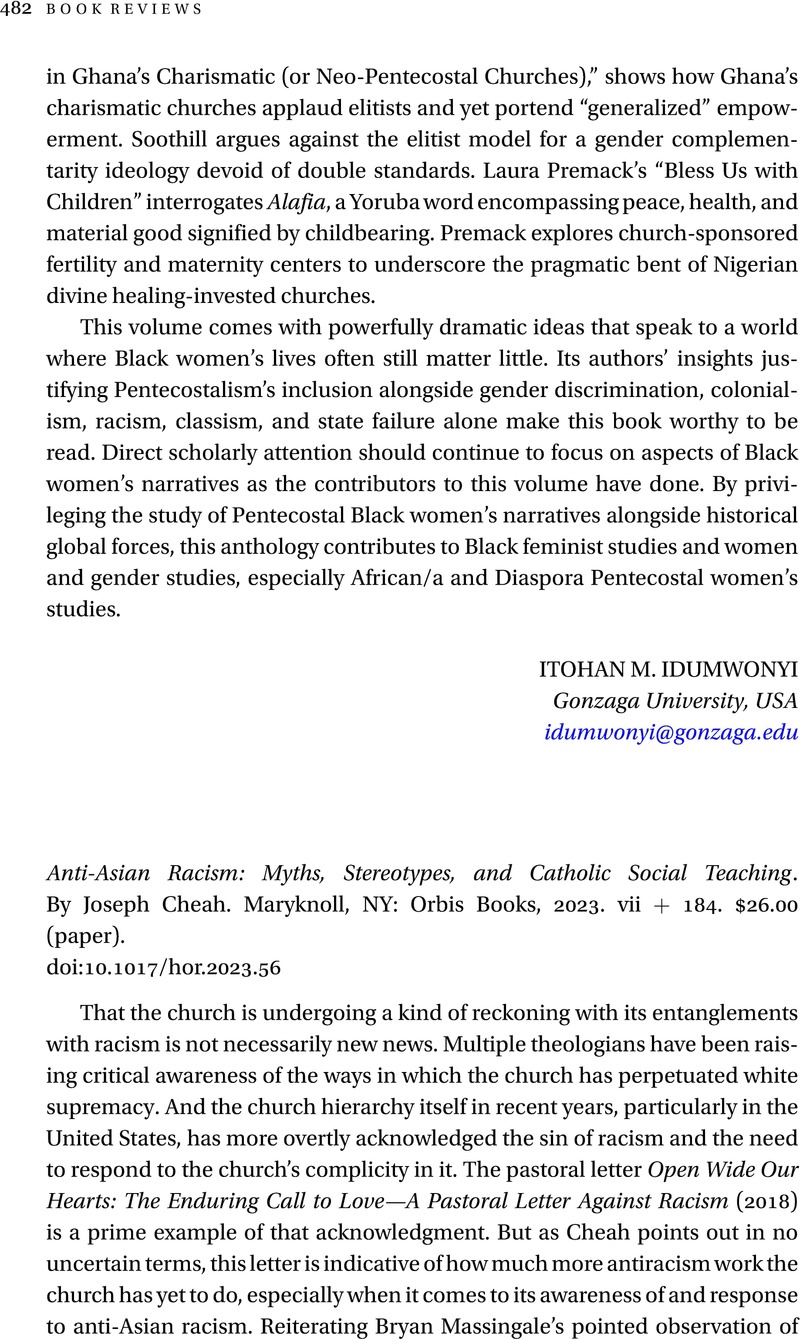No CrossRef data available.
Anti-Asian Racism: Myths, Stereotypes, and Catholic Social Teaching. By Joseph Cheah. Maryknoll, NY: Orbis Books, 2023. vii + 184. $26.00 (paper).
Review products
Anti-Asian Racism: Myths, Stereotypes, and Catholic Social Teaching. By Joseph Cheah. Maryknoll, NY: Orbis Books, 2023. vii + 184. $26.00 (paper).
Published online by Cambridge University Press: 08 March 2024
Abstract
An abstract is not available for this content so a preview has been provided. Please use the Get access link above for information on how to access this content.

- Type
- Book Review
- Information
- Copyright
- © College Theology Society 2024



